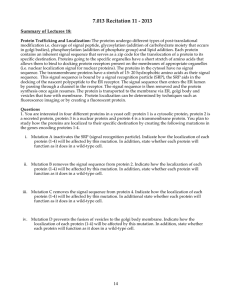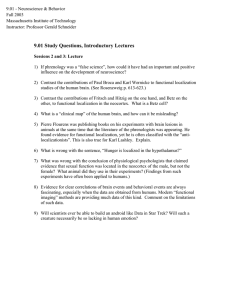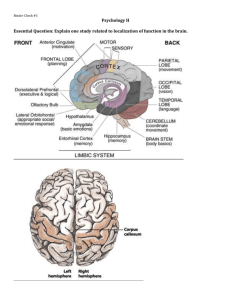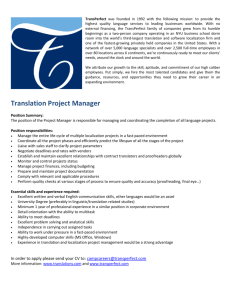Document 13541306
advertisement
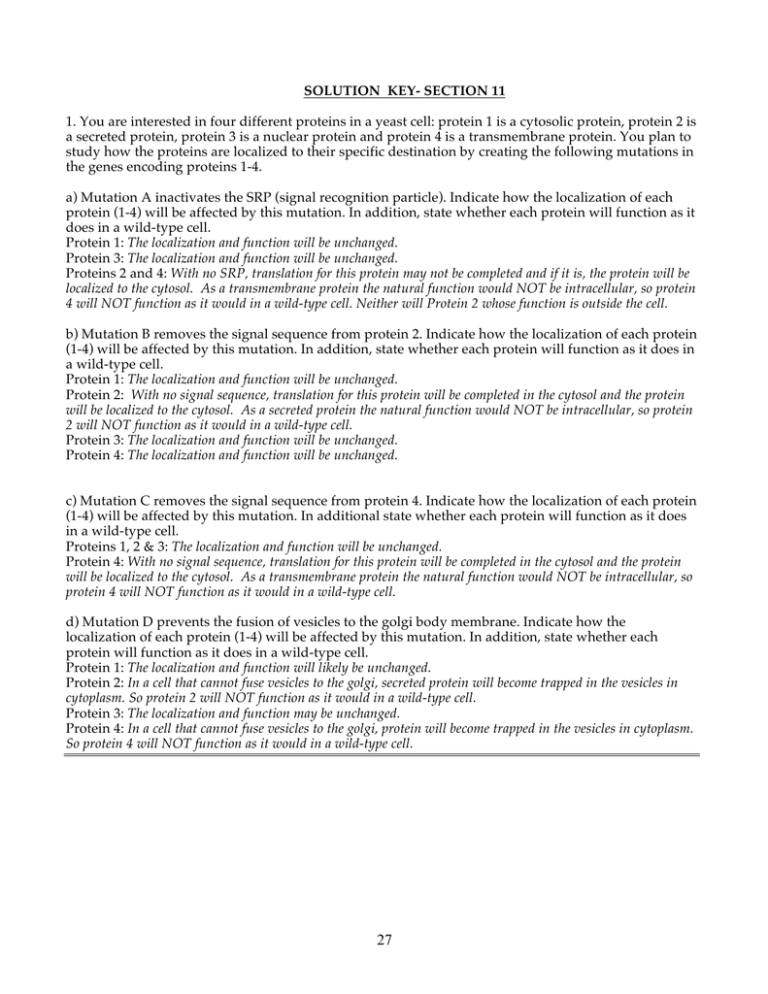
SOLUTION KEY- SECTION 11 1. You are interested in four different proteins in a yeast cell: protein 1 is a cytosolic protein, protein 2 is a secreted protein, protein 3 is a nuclear protein and protein 4 is a transmembrane protein. You plan to study how the proteins are localized to their specific destination by creating the following mutations in the genes encoding proteins 1-4. a) Mutation A inactivates the SRP (signal recognition particle). Indicate how the localization of each protein (1-4) will be affected by this mutation. In addition, state whether each protein will function as it does in a wild-type cell. Protein 1: The localization and function will be unchanged. Protein 3: The localization and function will be unchanged. Proteins 2 and 4: With no SRP, translation for this protein may not be completed and if it is, the protein will be localized to the cytosol. As a transmembrane protein the natural function would NOT be intracellular, so protein 4 will NOT function as it would in a wild-type cell. Neither will Protein 2 whose function is outside the cell. b) Mutation B removes the signal sequence from protein 2. Indicate how the localization of each protein (1-4) will be affected by this mutation. In addition, state whether each protein will function as it does in a wild-type cell. Protein 1: The localization and function will be unchanged. Protein 2: With no signal sequence, translation for this protein will be completed in the cytosol and the protein will be localized to the cytosol. As a secreted protein the natural function would NOT be intracellular, so protein 2 will NOT function as it would in a wild-type cell. Protein 3: The localization and function will be unchanged. Protein 4: The localization and function will be unchanged. c) Mutation C removes the signal sequence from protein 4. Indicate how the localization of each protein (1-4) will be affected by this mutation. In additional state whether each protein will function as it does in a wild-type cell. Proteins 1, 2 & 3: The localization and function will be unchanged. Protein 4: With no signal sequence, translation for this protein will be completed in the cytosol and the protein will be localized to the cytosol. As a transmembrane protein the natural function would NOT be intracellular, so protein 4 will NOT function as it would in a wild-type cell. d) Mutation D prevents the fusion of vesicles to the golgi body membrane. Indicate how the localization of each protein (1-4) will be affected by this mutation. In addition, state whether each protein will function as it does in a wild-type cell. Protein 1: The localization and function will likely be unchanged. Protein 2: In a cell that cannot fuse vesicles to the golgi, secreted protein will become trapped in the vesicles in cytoplasm. So protein 2 will NOT function as it would in a wild-type cell. Protein 3: The localization and function may be unchanged. Protein 4: In a cell that cannot fuse vesicles to the golgi, protein will become trapped in the vesicles in cytoplasm. So protein 4 will NOT function as it would in a wild-type cell. 27 MIT OpenCourseWare http://ocw.mit.edu 7.013 Introductory Biology Spring 2013 For information about citing these materials or our Terms of Use, visit: http://ocw.mit.edu/terms.
